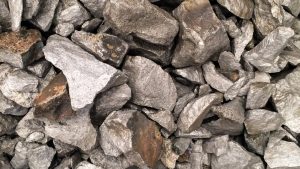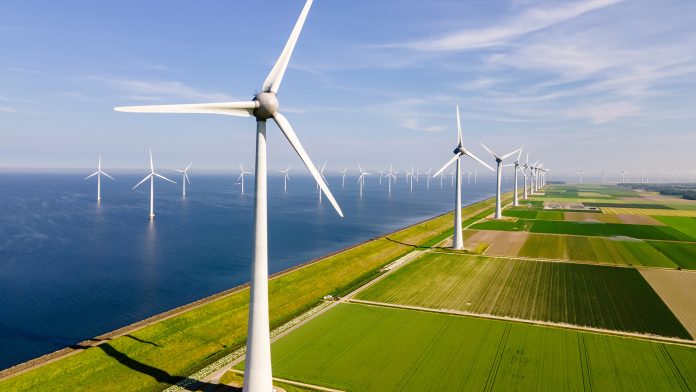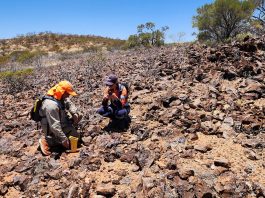The REEsilience EU-project aims to secure a reliable rare earth supply chain to facilitate Europe’s transition to green energy.
Rare earth elements (REEs) are essential components in many modern technologies, particularly those associated with the green energy revolution. As Europe undergoes an ambitious energy transition, the need for a secure and reliable supply of REEs has become increasingly apparent. The REEsilience EU-project seeks to address this need by developing a sustainable and resilient supply chain for rare earth magnets, which are indispensable for renewable energy technologies and electric vehicles.
About the REEsilience project
REEsilience is funded by the European Union’s research and innovation programme Horizon Europe (GA No. 101058598) and coordinated by the Institute for Precious Metals and Technology (STI) of Pforzheim University, Germany, and will last until June 2026. The consortium comprises 18 project partners from ten European countries (Austria, Belgium, France, Germany, Netherlands, Poland, Slovenia, Spain, Sweden, and the United Kingdom).
The goals and main aims of the REEsilience project are multifaceted. First and foremost, the project seeks to reduce Europe’s dependence on imported rare earth materials by establishing a secure and more sustainable supply chain for rare earth magnetic materials and products in Europe and will create new market opportunities for critical raw materials more sustainably produced in the continent. This involves investing in developing advanced extraction and processing techniques to minimise environmental impacts while maximising resource efficiency.
Another key objective of REEsilience is to foster innovation in designing and manufacturing rare earth magnets. The project aims to create more efficient and environmentally friendly magnets, which will contribute to the overall sustainability of green technologies. By focusing on research and development, REEsilience is driving the creation of cutting-edge solutions that will help Europe maintain its competitive edge in the green technology sector.

Collaboration is a cornerstone of the REEsilience project, with partners from academia, industry, and research institutions working together to achieve their shared goals. By fostering a collaborative and multidisciplinary approach, the initiative can better address the complex challenges associated with securing a sustainable rare earth supply chain. Furthermore, this spirit of cooperation ensures that REEsilience remains at the forefront of innovation as participants exchange ideas, knowledge, and expertise to drive the project forward.
How important is securing a European supply chain of REEs?
The importance of securing a supply chain of REEs for Europe’s energy transition cannot be overstated. As the world shifts towards renewable energy sources and electric vehicles, the demand for rare earth magnets, which are essential components in wind turbines and electric motors, continues to grow. Europe’s green energy ambitions could be jeopardised without a stable supply of REEs.
Currently, the global supply of REEs is heavily concentrated in China, which controls over 90% of the market.1 However, this reliance on a single source has raised concerns about the vulnerability of Europe’s supply chain, as geopolitical tensions or trade disputes could potentially disrupt access to these vital materials. By developing a more resilient and self-sufficient supply chain, REEsilience aims to mitigate these risks and ensure that Europe’s energy transition remains on track.
Building a domestic supply of rare earth magnets
The REEsilience project is actively working on several fronts to build more sustainable rare earth magnets domestically. One of the project’s primary focus areas is the development of innovative extraction methods that minimise environmental impacts. By using advanced techniques, such as bioleaching and ionic liquid extraction, REEsilience aims to reduce the amount of waste and pollution generated during the extraction process.
In addition to improving extraction methods, REEsilience is also working on refining the processing and separation of REEs. The goal is to create more efficient processes that yield higher-purity materials while reducing energy and chemical consumption. This not only contributes to the overall sustainability of rare earth production but also helps lower the costs associated with manufacturing rare earth magnets.
Another key aspect of the REEsilience project is the development of recycling and circular economy strategies. By promoting the recovery and reuse of rare earth materials from end-of-life products, such as wind turbines and electric vehicles, the project aims to reduce the overall demand for virgin REEs. This approach not only helps to conserve valuable resources but also reduces the environmental footprint of rare earth production.
To accelerate the development of more sustainable rare earth magnets, REEsilience is also investing in research and development. The project supports exploring novel materials and designs that could potentially replace or reduce the use of REEs in magnets. This includes investigating alternative magnetic materials and optimising the performance of existing rare earth magnets through advanced manufacturing techniques.
By actively pursuing these various strategies, the REEsilience project is making significant strides toward establishing a more sustainable and resilient rare earth supply chain within Europe. The initiative’s success will not only bolster the region’s green energy transition but also strengthen Europe’s competitive position in the global market for renewable technologies and electric vehicles.
The REEsilience project will help facilitate Europe’s energy transition
The REEsilience project plays a crucial role in securing a reliable supply of rare earth elements for Europe’s energy transition. By focusing on developing advanced extraction, processing, and recycling techniques, as well as promoting innovation in the design and manufacturing of rare earth magnets, REEsilience is helping to build a more sustainable and resilient supply chain. The collaborative and multidisciplinary approach of the project ensures that cutting-edge solutions are continually being developed and implemented, ultimately benefiting Europe’s transition to a greener, more sustainable future.

The success of the REEsilience project holds significant implications for the future of Europe’s energy landscape. As the demand for renewable energy technologies and electric vehicles continues to grow, the importance of securing a sustainable and resilient supply chain for rare earth elements becomes increasingly evident. By addressing these challenges head-on, REEsilience is not only contributing to Europe’s green energy ambitions but also fostering innovation and collaboration across multiple sectors.
Through its commitment to research, development, and cooperation, the REEsilience project is poised to make a lasting impact on Europe’s energy transition and the global quest for a more sustainable future. By investing in the development of more sustainable rare earth magnets and fostering a resilient supply chain, the project is helping to ensure that Europe remains at the forefront of the green technology revolution. As the world moves towards a cleaner, more sustainable energy landscape, initiatives like REEsilience will play an increasingly crucial role in shaping our collective future.
In summary, the REEsilience project is a vital component of Europe’s efforts to achieve a more sustainable and reliable supply chain for rare earth elements. By addressing the complex challenges associated with rare earth production and use, the initiative supports Europe’s transition to a greener future while promoting innovation and collaboration across the continent. As the demand for rare earth magnets and green technologies continues to grow, the success of the REEsilience project will have far-reaching implications for the future of Europe’s energy landscape and the global push for sustainability.









